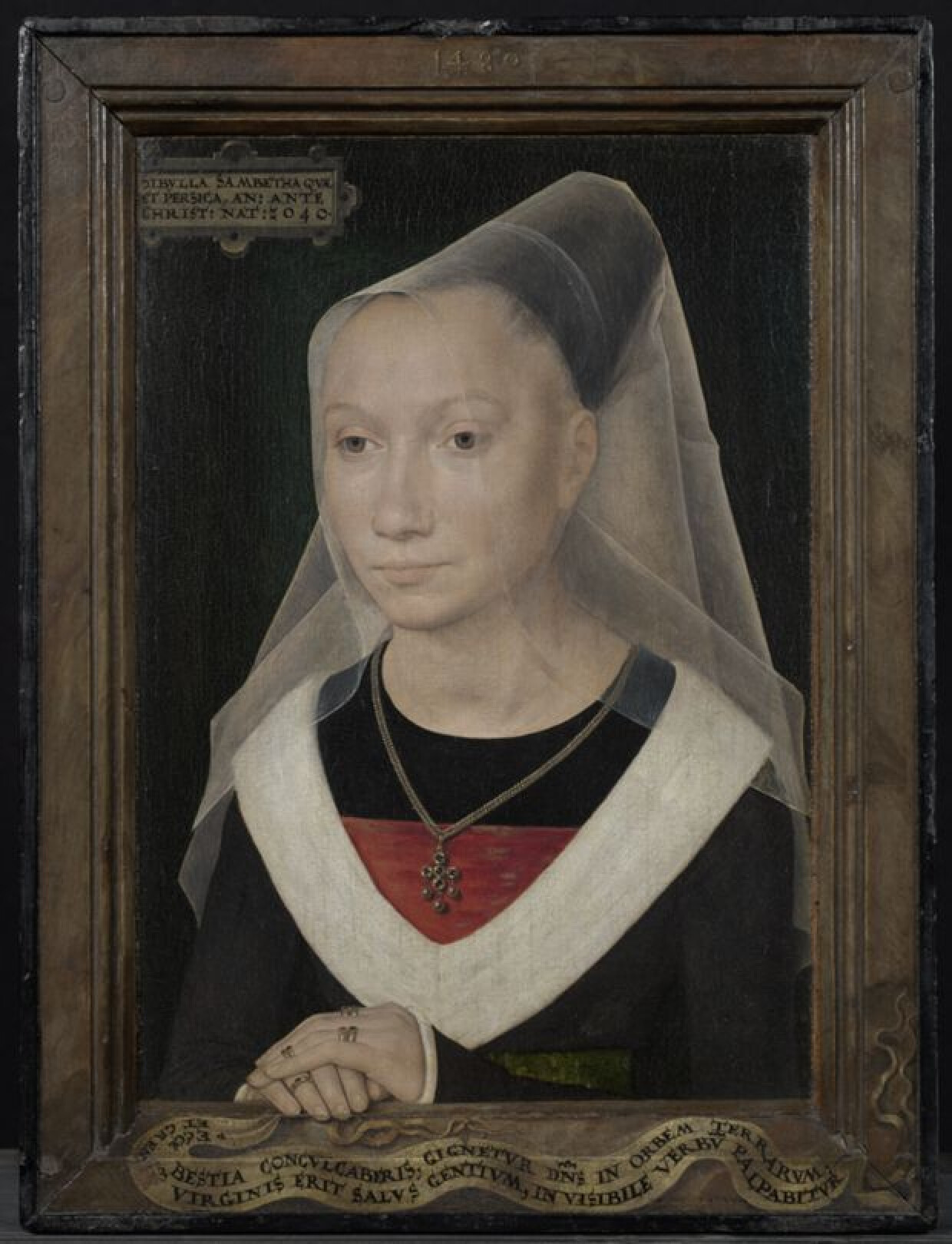Close
Manufacturer
Hans Memling (schilder)Period and date
15de eeuwMASTERPIECE
One of the main characteristics of Early Netherlandish painting is realism. This is partly because they were masters of textural expression. But they also had another clever trick for achieving this realism: optical illusion, also known as trompe l’oeil. The term comes from French and means ‘deceives the eye’. In the case of the Diptych of Maarten van Nieuwenhove, but also of this Portrait of a young woman or Sibylla Sambetha, Hans Memling does this by making the painting of the panel continue onto the frame. By painting the sitter this way, with her fingertips resting on the frame, it seems as if she is actually behind the frame and that, if she wanted to, she could reach through it, to us. The frame is another example. It is made from wood but the painting makes it look like valuable marble. In this way, Memling is demonstrating his talent for deception.
